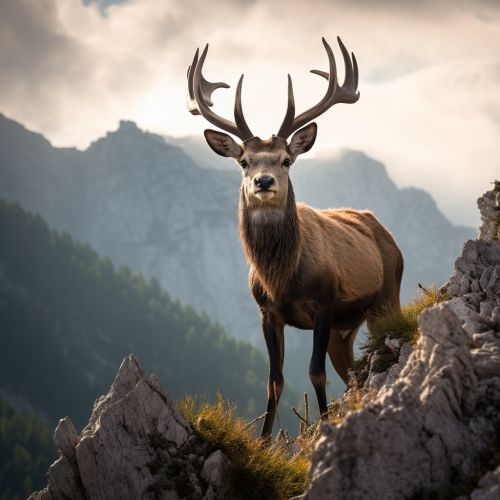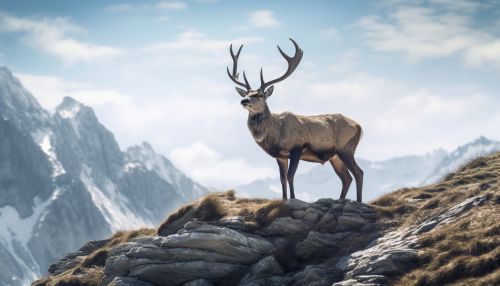Alpine ibex
Taxonomy and Evolution
The Alpine ibex, scientifically known as Capra ibex, is a species of wild goat that inhabits the mountain ranges of the European Alps. The Alpine ibex is a member of the genus Capra, which also includes other species of wild goats and ibexes. The species is classified under the family Bovidae, which comprises various species of hoofed mammals, including antelopes, gazelles, and cattle.
The Alpine ibex is believed to have evolved from the extinct species Capra camburgensis, which lived during the Pleistocene epoch. The species is closely related to the Spanish ibex (Capra pyrenaica) and the Siberian ibex (Capra sibirica).


Physical Characteristics
The Alpine ibex is a sexually dimorphic species, meaning males and females exhibit distinct physical differences. Males, or bucks, are significantly larger than females, or nannies, and can weigh between 67 and 117 kilograms, while females typically weigh between 17 and 35 kilograms.
One of the most distinctive features of the Alpine ibex is its large, backward-curving horns. The horns of the males can reach up to 1 meter in length and have numerous transverse ridges, while the horns of the females are significantly smaller, reaching only about 35 centimeters in length and have fewer ridges.
The coat of the Alpine ibex changes with the seasons. In summer, the coat is short and brownish-gray in color, while in winter, it becomes thicker and turns to a rich brown or black. The underparts and the insides of the legs are white, and there is a dark stripe along the back.
Habitat and Distribution
The Alpine ibex is endemic to the European Alps, spanning across countries including France, Italy, Switzerland, Germany, and Austria. They inhabit steep, rough terrain above the snow line, typically at altitudes between 1,800 and 3,300 meters. The species prefers rocky regions with plenty of crevices and cliffs, which provide shelter from predators and harsh weather conditions.
Diet and Behavior
The Alpine ibex is a herbivore, feeding mainly on grasses, leaves, and twigs. During the winter months, when vegetation is scarce, they descend to lower altitudes and feed on coniferous trees and shrubs.
The species is known for its exceptional climbing abilities, which allow it to access food and escape from predators. They are also excellent jumpers and can leap up to 6 feet in the air from a standstill.
Alpine ibexes are social animals and typically live in herds. The composition of these herds changes with the seasons. During the summer, males and females live in separate groups, while in the mating season, or rut, males join female groups.
Reproduction and Lifespan
The mating season of the Alpine ibex occurs in December, and after a gestation period of approximately 167 days, females give birth to one or two young, known as kids, in May or June. The kids are weaned at around six months of age and reach sexual maturity at 18 months for females and three years for males.
The average lifespan of the Alpine ibex is around 15 years in the wild, although some individuals have been known to live up to 20 years.
Conservation Status
The Alpine ibex was once hunted to near extinction for its meat and horns, with the population falling to less than 100 individuals in the early 19th century. However, thanks to conservation efforts, the population has recovered, and the species is now listed as Least Concern on the IUCN Red List.
